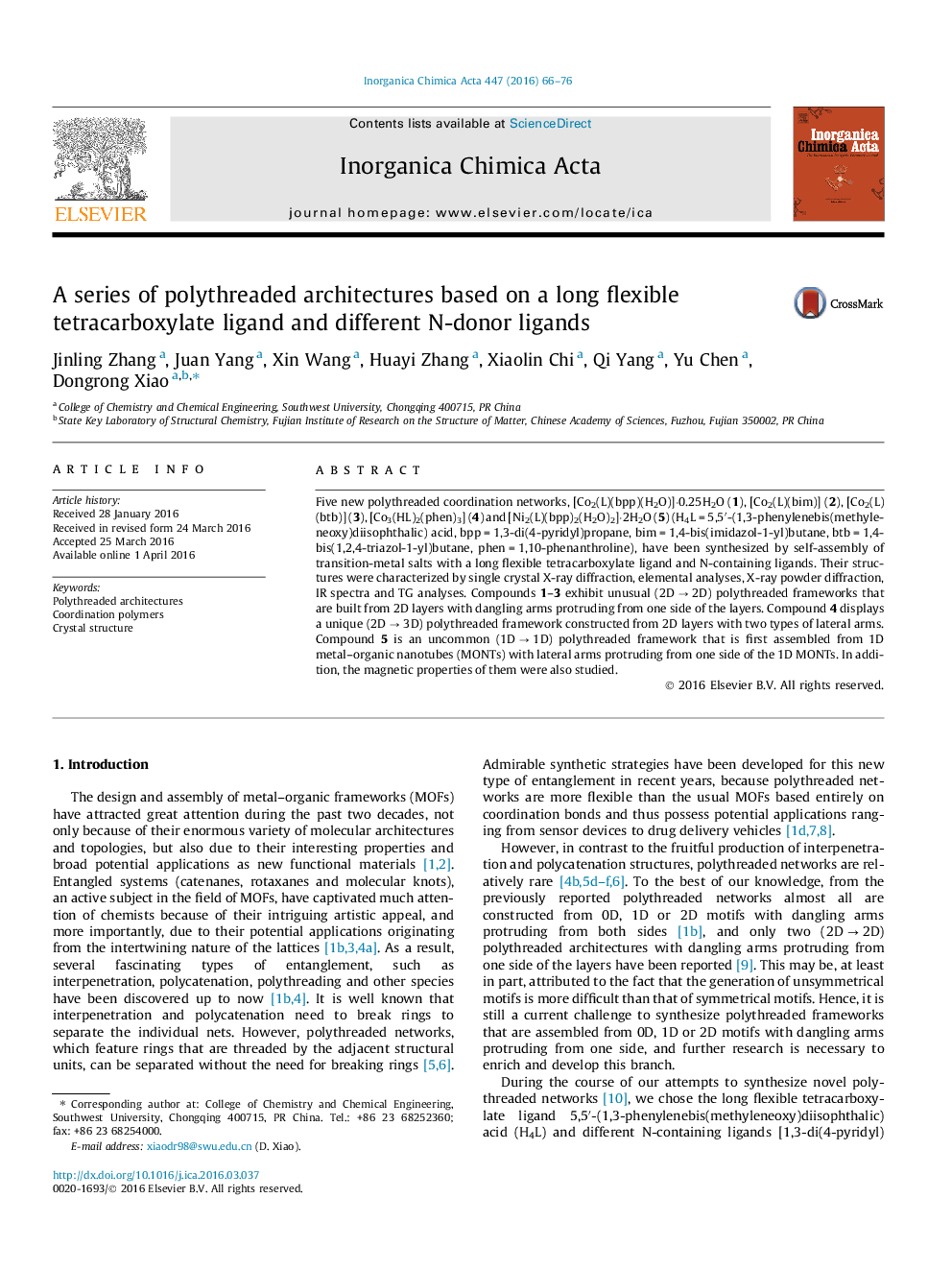| Article ID | Journal | Published Year | Pages | File Type |
|---|---|---|---|---|
| 1307480 | Inorganica Chimica Acta | 2016 | 11 Pages |
•Polythreaded nets composed of 2D layers with dangling arms protruding from one side.•2D → 3D polythreaded net constructed from 2D layers with two types of lateral arms.•Polythreaded net assembled from 1D MONTs with lateral arms protruding from one side.
Five new polythreaded coordination networks, [Co2(L)(bpp)(H2O)]·0.25H2O (1), [Co2(L)(bim)] (2), [Co2(L)(btb)] (3), [Co3(HL)2(phen)3] (4) and [Ni2(L)(bpp)2(H2O)2]·2H2O (5) (H4L = 5,5′-(1,3-phenylenebis(methyleneoxy)diisophthalic) acid, bpp = 1,3-di(4-pyridyl)propane, bim = 1,4-bis(imidazol-1-yl)butane, btb = 1,4-bis(1,2,4-triazol-1-yl)butane, phen = 1,10-phenanthroline), have been synthesized by self-assembly of transition-metal salts with a long flexible tetracarboxylate ligand and N-containing ligands. Their structures were characterized by single crystal X-ray diffraction, elemental analyses, X-ray powder diffraction, IR spectra and TG analyses. Compounds 1–3 exhibit unusual (2D → 2D) polythreaded frameworks that are built from 2D layers with dangling arms protruding from one side of the layers. Compound 4 displays a unique (2D → 3D) polythreaded framework constructed from 2D layers with two types of lateral arms. Compound 5 is an uncommon (1D → 1D) polythreaded framework that is first assembled from 1D metal–organic nanotubes (MONTs) with lateral arms protruding from one side of the 1D MONTs. In addition, the magnetic properties of them were also studied.
Graphical abstractFive new polythreaded coordination networks have been obtained by self-assembly of transition-metal salts with a long flexible tetracarboxylate ligand and N-containing ligands.Figure optionsDownload full-size imageDownload as PowerPoint slide
